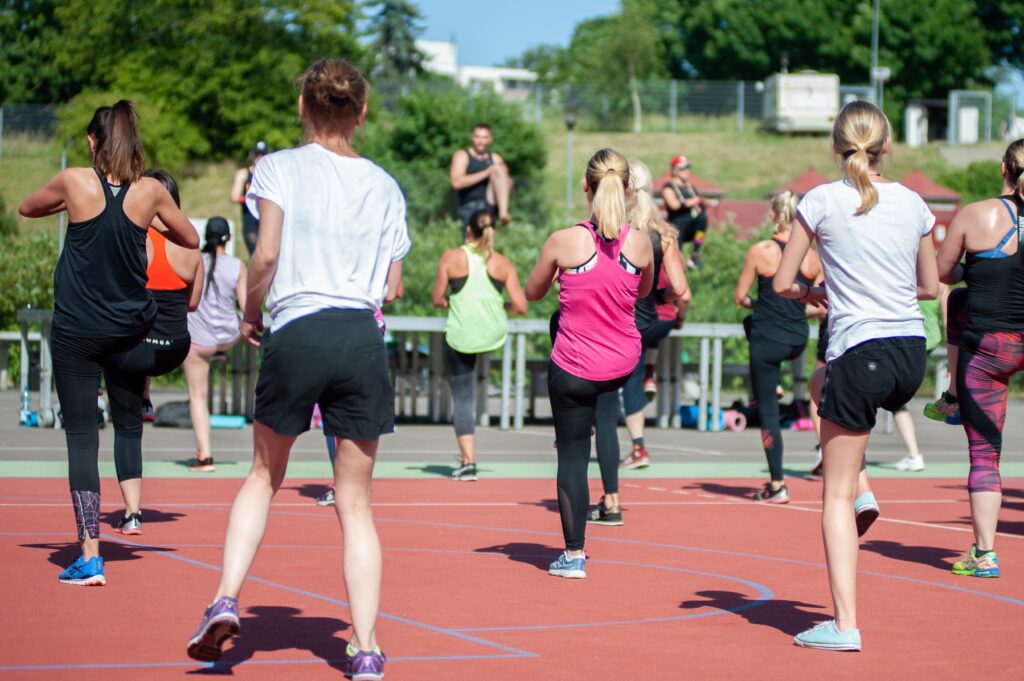
Overview
Living with Chronic Obstructive Pulmonary Disease (COPD) can be challenging, as it affects your ability to breathe easily and impacts your daily activities. COPD is a progressive lung condition that makes breathing difficult due to restricted airflow in and out of the lungs. While there’s no cure for COPD, regular exercise can help you manage symptoms, improve your lung function, and enhance your quality of life. This guide will cover the best exercises for COPD, breathing techniques, and tips for safely incorporating physical activity into your routine.
Understanding COPD
COPD refers to a group of lung diseases that block airflow and make breathing difficult. The most common conditions within COPD include:
- Emphysema – where the air sacs in the lungs are damaged
- Chronic bronchitis – inflammation of the bronchial tubes, causing mucus buildup
- Refractory asthma – a severe type of asthma that doesn’t respond to typical treatment
These conditions lead to symptoms such as chronic coughing, shortness of breath, wheezing, and fatigue. The primary cause of COPD is smoking, but long-term exposure to air pollution, chemical fumes, or dust can also contribute to the disease. Genetic factors, like alpha-1 antitrypsin deficiency, may also play a role in some cases.
While COPD is a serious condition, regular exercise can significantly reduce symptoms and help individuals with COPD maintain a more active and fulfilling lifestyle
How Exercise Can Help with COPD
Although exercise cannot reverse the lung damage caused by COPD, it can strengthen the muscles involved in breathing, improve oxygen efficiency, and increase overall endurance. Physical activity helps your body use oxygen more efficiently, reducing the strain on your lungs and making everyday tasks less tiring.
By incorporating exercises tailored to COPD, you can enhance your cardiovascular health, build muscle strength, and ultimately feel less breathless. Exercise can also boost your mental well-being by reducing anxiety, depression, and stress, which are common in people living with chronic conditions.
Best Exercises for People With COPD
Related : how to master bodyweight exercises at home
If you have COPD, it’s important to choose exercises that focus on improving lung capacity, endurance, and overall strength. Here are the most recommended exercises for people with COPD:
1. Walking

Walking is a low-impact aerobic exercise that strengthens your legs and improves cardiovascular fitness without overburdening your lungs. Start by walking at a comfortable pace for short durations and gradually increase your distance or time as your endurance improves. You can walk outdoors or use a treadmill indoors.
2. Cycling

Using a stationary bike is a great way to engage your leg muscles while keeping your lungs in check. Cycling helps build stamina and can be done at home or in a gym. For individuals with stronger lung capacity, riding a regular bicycle outdoors is another option, but always pace yourself and take breaks when necessary
3. Upper Body Strengthening (Arm Curls and Raises)
Strengthening your upper body helps with daily tasks like lifting, carrying, and reaching. Exercises such as arm curls and forward arm raises can be done using light weights or resistance bands. Perform these exercises in two sets of 10-15 repetitions, ensuring that you don’t overexert yourself.
4. Leg Strengthening (Leg Extensions and Calf Raises)
Leg exercises like extensions and calf raises are key to maintaining mobility. To do leg extensions, sit in a chair and extend one leg at a time, holding for a few seconds before lowering. For calf raises, stand behind a chair for support, lift onto your toes, and lower your heels back to the ground. These exercises can be performed with or without weights.
5. Swimming

Swimming is a fantastic full-body exercise for people with COPD. The buoyancy of water supports your body, making it easier to move without straining your joints. Swimming or even performing water aerobics can improve lung function, stamina, and overall strength.
6. Tai Chi
Tai Chi is a gentle exercise that combines slow, flowing movements with deep breathing. It helps improve balance, flexibility, and coordination while promoting relaxation, making it an ideal activity for individuals with COPD.
Essential Breathing Techniques for COPD
Alongside physical exercises, breathing techniques can help you manage shortness of breath and improve oxygen intake. Two widely used techniques are:
1. Pursed Lip Breathing
This technique helps you control shortness of breath by slowing down your breathing. To practice, breathe in through your nose for two counts, then breathe out slowly through pursed lips (as if you’re blowing out a candle) for four counts. This helps keep your airways open longer and improves oxygen exchange.
2. Diaphragmatic (Belly) Breathing
Diaphragmatic breathing focuses on using your diaphragm, the main muscle of respiration, rather than your chest muscles. To do this, place one hand on your chest and the other on your abdomen. Breathe in deeply through your nose, allowing your abdomen to rise, and then breathe out slowly through pursed lips. This method strengthens your diaphragm and helps reduce the effort of breathing.
Getting Started with an Exercise Routine
Before starting any new exercise routine, it’s crucial to consult with your healthcare provider to ensure it’s safe for you, especially if you have severe COPD symptoms. Many people with COPD benefit from attending pulmonary rehabilitation programs, which provide structured exercise plans and expert guidance.
Here are some tips to help you get started:
- Start Slow: Begin with short, low-intensity sessions and gradually increase the duration as your fitness improves.
- Warm Up and Cool Down: Always spend a few minutes warming up before exercise and cooling down afterward to prevent muscle strain and aid recovery.
- Use Oxygen if Needed: If your doctor has prescribed supplemental oxygen, use it during exercise to ensure your muscles receive enough oxygen. Your doctor may need to adjust your oxygen flow for exercise purposes.
Tips for Exercising Safely With COPD
- Monitor Your Breathing: Pay attention to how your breathing feels. If you become too short of breath, stop and rest.
- Stay Hydrated: Drink plenty of water before, during, and after exercising to keep your body hydrated.
- Exercise Indoors During Poor Air Quality: Avoid outdoor exercise during high pollution or extreme weather conditions, as these can exacerbate COPD symptoms
The Takeaway
Exercise is one of the most effective ways to manage COPD symptoms and improve your overall well-being. By incorporating activities like walking, cycling, swimming, and breathing exercises into your routine, you can strengthen your muscles, improve lung function, and enhance your ability to carry out daily tasks with greater ease. Remember to start slow, consult your healthcare provider, and focus on consistency rather than intensity. With the right exercise plan, you can take control of your COPD and lead a more active and fulfilling life. Staying physically active will not only help you breathe easier but also boost your mental health, energy levels, and quality of life. Keep moving, stay strong, and enjoy the benefits of a healthier, more active lifestyle
Frequently Asked Questions
Is it safe to exercise if I have COPD?
Yes, it is generally safe to exercise with COPD, but it’s essential to consult with your healthcare provider before starting any exercise program. Exercise can help improve your lung function, build muscle strength, and reduce symptoms like shortness of breath. Starting slow and focusing on low-impact activities is key to ensuring safe exercise.
What types of exercises are best for people with COPD?
The best exercises for people with COPD include low-impact activities that focus on endurance, strength, and breathing control. Walking, cycling, swimming, and strength training for the upper and lower body are recommended. Breathing exercises like pursed-lip breathing and diaphragmatic breathing are also beneficial.
How often should I exercise with COPD?
You should aim for 20 to 30 minutes of moderate exercise on most days of the week, but it’s essential to listen to your body and rest when needed. If you’re just starting, try exercising for shorter durations and gradually increase the time as your endurance improves. Consistency is more important than intensity for managing COPD.
Can exercise worsen my COPD symptoms?
While exercise may temporarily make you feel short of breath, regular physical activity can help reduce overall COPD symptoms over time. If you experience severe shortness of breath, dizziness, or chest pain during exercise, stop immediately and consult your healthcare provider.











